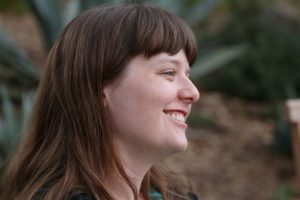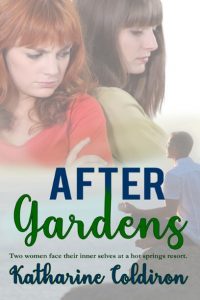Twisted Truths: How Real Life Inspires Fiction
 “Where do you get your ideas?” may be the question that fiction writers like least. For most writers, ideas come from inconsequential encounters or “what if?” questions, neither of which is a particularly interesting story to tell in an interview. Other ideas may derive from situations the writer has lived and then twisted a little bit to create fiction. The problem with confessing this kind of inspiration is the reader’s assuming, then, that everything in the fiction corresponds to something real, when this is usually not true. The implications of some stories being twisted truths are uncomfortable, and it’s easy to misconstrue the closeness of life and fiction in a way that harms the writer.
“Where do you get your ideas?” may be the question that fiction writers like least. For most writers, ideas come from inconsequential encounters or “what if?” questions, neither of which is a particularly interesting story to tell in an interview. Other ideas may derive from situations the writer has lived and then twisted a little bit to create fiction. The problem with confessing this kind of inspiration is the reader’s assuming, then, that everything in the fiction corresponds to something real, when this is usually not true. The implications of some stories being twisted truths are uncomfortable, and it’s easy to misconstrue the closeness of life and fiction in a way that harms the writer.
I wrote my short story “After Gardens” soon after I went to a week-long writing workshop at the Esalen Institute in Big Sur, California. Esalen was founded in the early 1960s by a handful of New Agers, and the vibe there is peaceful, tuned in to the natural world, and hippieish. I didn’t love my time there, because I found it a little hypocritical that it cost so much money to visit Esalen when the Institute’s messages were all about simplicity and freedom. Nevertheless, Big Sur is a unique environment, and Esalen is set on a gorgeous chunk of land with a natural hot springs. It offers worthy programs and world-class instruction.
In “After Gardens,” the two main characters, Maya and Rhondey, visit an unnamed resort in California with natural hot springs. The vibe is hippieish, which Rhondey makes much of, and in their room are “two twin beds with springy foam mattresses. The walls were oak-paneled, but the effect was claustrophobic, like a 1970s den.” The hot springs are clothing-optional, and when Maya finally goes inside, she sees a man pass by, “short and big-bellied with only a few sprigs of white hair, and he was naked, his penis bouncing gently with his heavy steps. He looked like the guy in the background of every sauna scene Maya had ever seen in any movie, any TV show, ever.” These descriptions are directly transcribed from my experiences at Esalen, along with an incident involving a random dancing guy doing the Monster Mash apropos of nothing, which my friend Katie and I joked about in the same words Maya and Rhondey use in the story.
Aside from these elements, almost nothing about “After Gardens” is based on reality. I invented the resort’s buildings, named and color-coded after the chakras. I made up the landscape, which is more southern California than Big Sur, and the lovely interior of the meditation hut where Maya has a series of encounters with Rodney, a figure I also made up. (Esalen’s meditation hut is smaller, dimmer, and less enclosed.) I conjured Maya’s story out of thin air; I have never been divorced, and the divorces I’ve seen up close don’t resemble hers at all. And I have no friends who, like Rhondey, resemble Ethel Merman.
So often, writing is about instinct, not science. It’s hard to explain why it seemed right to put Katie’s words in Rhondey’s mouth when Katie has nothing in common with Rhondey. In writing the story, I removed the fragment of Katie from its spot inside her and put it someplace fictional. With this small, ordinary miracle, I twisted the truth to make something new.
It was my instinct that told me there was a story in Esalen. I wanted to explore how the place was at once self-serious enough to make me roll my eyes and energetically rich enough to make me stand a little straighter, look into myself a little deeper. And I wanted to immortalize some of the funny things that happened to me there. But I knew that I needed to exaggerate Esalen’s qualities in order to make the story work, that I needed to shape the place until it suited the journey of self-realization Maya was on. It would have been unkind to assume my experiences at Esalen were the sum of the place, so I invented a new place instead of caricaturing the real one.
 But if I did my job well, you might assume I’m being unkind to Esalen on purpose, or that I’m skewering Katie when I write about the vivacious/obnoxious Rhondey. You might think I’m revealing genuine, personal pain when I explain how Maya’s divorce has undone her sense of herself. I’m not. My work in “After Gardens” collects and recontextualizes real experiences along with stories I’ve heard and read, and combines them with characters and reactions I imagine, in order to make something new and fictional.
But if I did my job well, you might assume I’m being unkind to Esalen on purpose, or that I’m skewering Katie when I write about the vivacious/obnoxious Rhondey. You might think I’m revealing genuine, personal pain when I explain how Maya’s divorce has undone her sense of herself. I’m not. My work in “After Gardens” collects and recontextualizes real experiences along with stories I’ve heard and read, and combines them with characters and reactions I imagine, in order to make something new and fictional.
This is the great pleasure of writing fiction: describing something that didn’t exist before in any place other than the writer’s mind. Making that thing real enough to convince the reader. The most convincing stories often start somewhere real—for example, using my experience at Esalen to inform a story that’s really about a woman returning to a dormant version of her identity.
Very little of this information makes a good answer when people ask where I get my ideas. I get them from the life I live, and they go through the filter of my imagination and become something else. The ratio of reality to fiction is not fixed, not a formula I can replicate easily.
It might be unsafe to do this kind of writing if you don’t twist the truth far enough to demonstrate that it’s fiction, or if the people you’re twisting don’t understand your profession. But it’s also a great extension to “write what you know.” Write just a little bit outside what you know, into the place where your experience meets your imagination.
—
“After Gardens” will be available in ebook form from the Wild Rose Press on June 19, 2019.
Katharine Coldiron’s work has appeared in Ms., the Washington Post, the Guardian, the Rumpus, LARB, and many other places. Find her at kcoldiron.com or on Twitter @ferrifrigida.
Category: On Writing
























Comments (1)
Trackback URL | Comments RSS Feed
Sites That Link to this Post